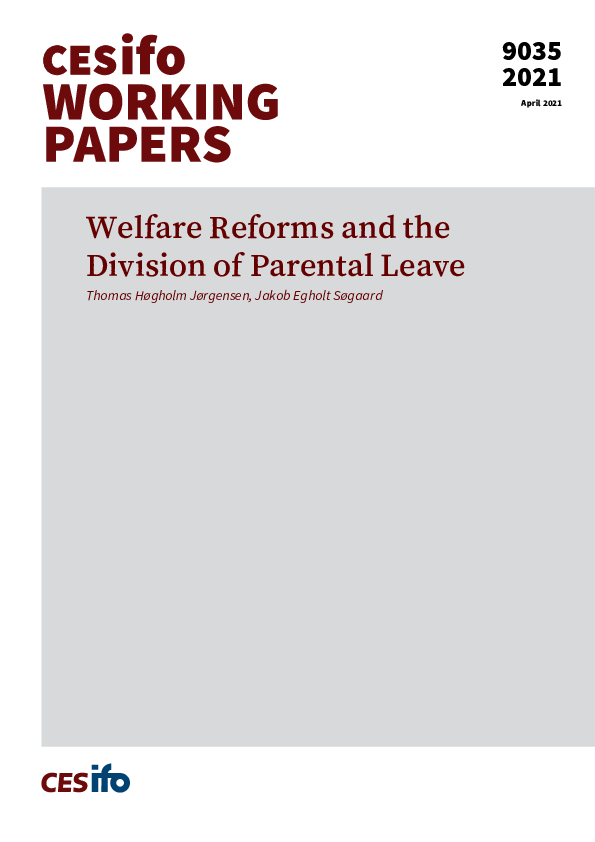Welfare Reforms and the Division of Parental Leave
CESifo, Munich, 2021
CESifo Working Paper No. 9035

We study the design of parental leave systems through the lens of an estimated model of parents’ joint willingness to pay for parental leave. We estimate the model using Danish register data on almost 200,000 births combined with sharp variation in economic incentives created by the parental leave benefit system. The estimated model reproduces the empirical distribution of leave, including bunching at kinks in household budget sets and a large share of fathers taking little or no leave at all. We provide a menu of counterfactual policy simulations showing substantial interaction effects between earmarked leave, replacement rates and the duration of leave benefits. For example, introducing 9 weeks earmarked parental leave, as stipulated by a recent EU directive, with a low replacement rate increases the leave of fathers only slightly, while it reduces the leave of mothers significantly in our model. Finally, we discuss the efficiency costs of different policies aimed at increasing the parental leave of fathers.
Public Finance
Labour Markets